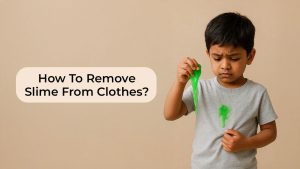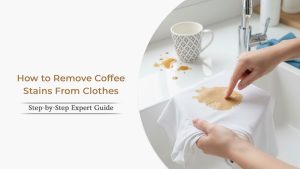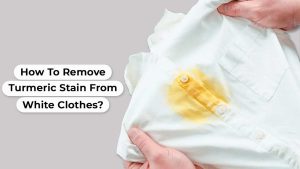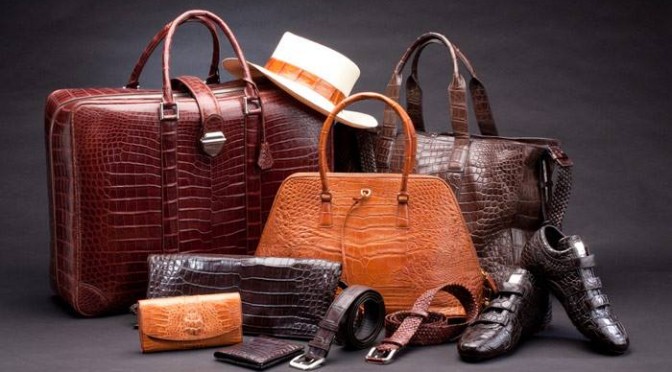In this blog, we are going to check...
Read More
Table of Contents
Don’t like clothes getting stiff after laundry? Fabric softeners are here to rescue you. They make clothes softer and also leave a fresh smell behind. But if you have no clue about fabric softeners, you might wonder what it is and how it is used. In this article, we have shared everything. So, keep reading and understand how fabric softener works in laundry, when and how to use it.
What is fabric softener?

As the name suggests, fabric softener or conditioner is a substance used to make clothes soft and keep them in a good state. When clothes rub against each during a wash cycle, it causes static which makes your clothes stiff.
The ingredients of softeners delve deep into the fibres of clothes to reduce static and add softness. It comes in form of liquid, powder and dryer sheets. You can easily find softeners like Comfort, Softtouch, etc. in your nearest retail stores or buy them online via Amazon, Flipkart, etc.
How fabric softener is different from laundry detergent

A laundry detergent helps in removing dirt, dust, sweat & stains from your clothes. On the other hand, a fabric softener removes stiffness in clothes that weakens the fibres of the fabric gradually. It strengthens the fibres and reduces friction during laundry. This helps in retaining the original shape, colour, pilling and softness of a garment.
To understand it better you can consider laundry detergents like shampoo which is used to clean your hair. Whereas, a fabric softener works like a conditioner which is used to provide nourishment to clean hair.
How To Use Fabric Softener In Laundry
Fabric softener is commonly available in liquid form in bottles or normal containers and in fabric softener balls. Let’s see how to use both of them:
Using liquid fabric softener in laundry
In Case of Machine Wash
Refer to the instructions on the packaging label to know how much softener you should add to the laundry load. Because the exact usage directions may differ from brand to brand. In case, the instructions are not clear, you can use 35ml fabric softener per 4-5kg load, and 55 ml for a 6-7 kg load.
If your machine has a fabric dispenser which is generally indicated with a star or flower icon, add a softener to the dispenser. Do it at the beginning of the wash cycle, it will be dispensed automatically at the right time (before the rinse cycle).
In case you have a semi-automatic or older machine without any particular dispenser, you can also add softener directly to the washer tub. Pour the above-mentioned quantities of softener depending in a mug half-filled with water. Add this liquid to the washer tub before the rinse cycle.
CAUTION: Don’t use excessive fabric softener
Always remember less is more. If you will add too much fabric softener, dryer balls or dryer sheets the residue will build up on your laundry as well as on the machine. So, always add a softener as per the instructions on the manual/ packaging.
Here’s how you can use fabric softener while washing clothes with your hands:
In Case of Hand Wash
Add approximately 20 ml of fabric softener to a 10-litre bucket full of clean water during the last rinse after washing clothes. Swirl with your hands to mix it with water. You can add up to 8-10 clothes in the bucket. So, check whether there is enough water to submerge your clothes or not. The key is to let every clothes absorb in the water. Let the clothes soak for 5 minutes. Then take them out and leave them to dry. You must not rinse them after using fabric softener. So, make sure that you add softener to the last rinse.
CAUTION
Wash your hands immediately after handling the fabric softener. They can cause itching or irritation if you have very sensitive skin. If undiluted softener stays on the skin for too long it can even cause mild reactions.
Hey! Would you like to get your dirty clothes cleaned effortlessly?
Using fabric softener balls in laundry

You can also purchase fabric softener dispenser balls. They are tiny plastic balls filled with fabric softener liquid. These balls are a good option if you often forget to add the liquid softener to the rinse cycle. Here is how to use them:
In Case of Machine Wash
You can add them to the dirty laundry. When the washer spins at the end of the wash cycle, the dispenser ball opens and fabric softener is added to the wet clothes as the rinse cycle starts.
You can also add the fabric softener directly to the washer during the final rinse cycle. It will not get washed away with detergent and not leave stains on your clothes.
In Case of Hand Wash
You should should fabric softener during the last rinse. Fill a bucket of 10-litres capacity with water. Break a fabric softener balls in the water to add the softener. Swirl with your hands for 10-15 seconds. The key is to add approximately 20 ml of softener to the bucket. So, you have to check the amount of softener one ball contains. For this, you must check the packaging of the fabric softener balls.
The rest of the process is the same as using liquid fabric softener while hand washing clothes. Depending on their weight and length, you can add up to 8-10 clothes in the bucket. The key is to let every garment absorb the water that contains fabric softener. Let the garments soak in water for 5 minutes, take them out and leave to dry. Don’t rinse them again.
Is Fabric Softener Good For All Your Laundry

Fabric softeners add a protective layer to your clothes. However, they are not made for every single fabric that exists. They are best suited for fabrics made up of natural materials, like cotton, wool, etc. Some fabrics do not respond to softeners. So, you must check the garment care label, if the manufacturers don’t recommend softeners, it is better not to use them.
Another reason why you should not use them in every laundry load is safety. Some clothes like flame-resistant jackets or active wear are made in different ways. When you add fabric softener to them it leaves a residue that coats above the fibre. In the case of normal clothing, it acts as a protective layer. However, in the case of some special clothes, it can reduce the functioning or effectiveness of the clothes. Here are some fabrics that don’t need softeners while laundry:
- Flame-resistant clothes (generally made for kids): It will reduce the self-extinguishing capacity.
- Water-repellent clothes: It affects the water-repelling ability adversely.
- Athletic or active wear: The moisture-wicking & stain-absorbing ability of clothes.
- Microfiber clothes (like towels): They are generally made up of polyester & nylon and can bond to the oils in a fabric softener. As a result, they lose the absorbent capacity gradually.
You can use natural fibre wool dryer balls on a laundry load having the above-mentioned clothes. It will help reduce static to a good extent.
Got too tough stains on your clothes? Don’t worry we can remove them.
How To Make Fabric Softener For Laundry At Home

If you or your family member is allergic to commercial fabric softeners, or you just don’t prefer them for any other reason, prepare one at home.
You can use vinegar in laundry and prepare several fabric softeners at home using white distilled vinegar in three ways, let’s see how:
- Vinegar
- Vinegar and Baking Soda
- Vinegar and Hair Conditioner
CAUTION
Do not use apple cider vinegar or any other tinted vinegar to make fabric softeners at home. They can leave a stain or darken your clothes.
Vinegar
When clothes are not rinsed properly and detergent is left inside them, it causes stiffness. Vinegar strips away any leftover soap from clothes. It can also break down some minerals of hard water that stiffens clothes. Hence, it can make your clothes feel softer.
If you want a scented smell from your clothes you can add 20-25 drops of essential oil of your choice to 3.5 L distilled white vinegar. Stir the mixture for 1 minute to ensure that they mix well together.
Add ¼ cup (20 ml) vinegar (or a mixture of vinegar & essential oil) to the fabric softener dispenser. You can also fill the solution in a fabric softener ball or simply add it directly to the washer tub before the rinse cycle. Store the remaining fabric softener in a container. Shake well before every use so that the essential oil and vinegar stay combined.
Vinegar & Baking Soda
Add 250ml of baking soda to 500 ml of hot water. Stir using a spoon for a minute to mix them well. Pour this mixture into a bucket. Then add 250 ml of vinegar to the mixture. Stir for 1-2 minutes to dissolve the baking soda.
CAUTION
You must add vinegar slowly otherwise there will be a mess. Because vinegar will react with baking soda and cause a fizzy chemical reaction.
Add 60 ml of this solution to the fabric softener of your washing machine. You can fill it in fabric softener balls or directly add it to the washer tub before the rinse cycle. Store the remaining fabric softener in a container for the future.
This works well if you have a hard water supply. Because baking soda regulates the pH level in the water and removes some mineral deposits (which are responsible for making clothes stiff) found in hard water.
Vinegar and Hair Conditioner
Vinegar strips away soapy residue that stiffens fabric and conditioner softens the fabric. Hence, it is a very effective fabric softener.
Take a large bucket, and add 3 cups (750 ml) of white distilled vinegar and 2 cups (500 ml) of your regular hair conditioner. Now, add 6 cups (1500 ml) of hot water. Stir for 1-2 minutes or until everything gets combined well.
Add 60-125 ml of this mixture to the fabric softener dispenser of your machine. You can also add this directly to the washer tub before the rinse cycle begins. Store the remaining fabric softener in a container for future usage.
CAUTION
Do not mix vinegar with chlorine bleach. It will produce a gas which is not good for your health.
Alternatives For Fabric Softener In Laundry

If you or someone in your family is allergic to fabric softeners then you should avoid them. You can use dryer balls or dryer sheets as a fabric softener. They are good at combating static and leave a slight softness to clothes. They are more allergy-friendly than fabric softeners. You can easily get them in scented as well as unscented variants.
- Dryer balls are made of wool or synthetic materials. Wool dryer balls don’t have a heavy chemical coating to give an ultra-soft effect to clothes. Instead, they reduce static equalizing ions and electrons. Whereas plastic dryer balls repeatedly hit the fabric in the dryer to reduce stiffness and lint.
- Dryer sheets are often made of non-woven synthetic fabrics. They have a coating of a solution of silicone oil-based fabric softener or quaternary ammonium. They are available in both scented and unscented variants. The dryer heat melts the softener inside the dryer sheets which transfers to the fabric. As a result, the clothes get softer.
Add a new dryer sheet to the top of your laundry load before starting a dry cycle. You can also add 2-3 dryer balls after loading laundry into your dryer.
FAQs on using fabric softener in laundry
We do not recommend adding lemon juice to your fabric softener as it can bleach clothes. You may feel that a small quantity of lemon juice is not damaging to fabrics. However, it can still go wrong with sensitive clothes. You can use essential oil if you need a scent in your softener during laundry.
No, fabric softener is not crucial to your laundry. They do not help in washing or cleaning your clothes. So, if you just have to get stain-free, clean clothes you can skip it.
Fabric softener and fabric conditioner are terms used to describe a laundry additive used to soften clothes. Both these terms can be used interchangeably. So, yes, they are the same thing.
How To Remove Slime From Clothes
Playing with slime is among the favorite activity...
Read MoreHow to Find Best Laundry Service In Bangalore
In this blog, we are going to check...
Read MoreTraditional Clothes Of Uttar Pradesh: History, Fabrics &
Uttar Pradesh is popular worldwide for its rich...
Read MoreHow to Remove Turmeric Stain from White Clothes?
Which is the best steam iron or a...
Read More15 Best Ways to Get Grease Out of
In this blog, we will be covering the...
Read MoreHow To Remove Tea Stains From Clothes
Can’t say “No” to a cup of tea?...
Read MoreTop 30 Best Women Clothing Brands In India
Want to explore top 30 women clothing brands...
Read More5 Laundry Hacks for Removing Coffee Stains From
Many people end up losing their favorite garment...
Read MoreBest Ways to Use Vitamin C in Laundry
Don't let stains ruin your favorite clothes! Ever...
Read More
















